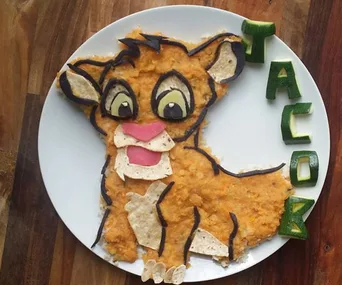You’ve spent hours peeling, chopping, steaming and pureeing fresh, healthy fruit and vegetables for your baby. But what does the little darling do? She turns away from the spoon in disgust and refuses to eat your lovingly prepared offering. Cue mummy meltdown.
If this sounds familiar, you’re not alone. Eight out of 10 Australian parents are concerned about their child’s eating habits and one-third worry that their little one isn’t eating enough. Here are 10 easy strategies you can use to help encourage your baby’s acceptance of new food.
1. If at first you don’t succeed…
Your baby may refuse a new food at first, but that’s not to say she doesn’t like it. It can take up to 10 attempts before a baby will accept a new food, so keep trying.
2. One at a time
Don’t overwhelm her with a smorgasbord of new tastes. Take your time and introduce foods one at a time.
3. Choose a relaxed time
If your baby is tired, she will be less open to persuasion or experimentation, so avoid introducing new foods at the end of a busy day.
4. Keep cool
Children’s food must be like their baths: tepid. If your baby burns her mouth, she I may be put off trying other food for a long time.
5. Bland is best
You may find the food you give her tasteless, but don’t be tempted to make it more interesting – babies like bland.
6. Two spoons are better than one
Let your child have a spoon of her own while you feed her. Babies enjoy learning to use a spoon and, while they’re trying to make it from plate to mouth, you can slip a spoon of food into her mouth without her really noticing.
7. If the spoons don’t work, try fingers
Children love to touch so finger foods are a great way for them to become familiar with food. Allow her to prod, squash and play, and make sure the pieces are big enough for her to get a firm hold.
8. Keep the serving size small
A big serving of a new food can be overwhelming to a baby. A teaspoonful or even a little dab on your finger is likely to be more successful than a huge dollop.
9. Follow the rules
Whole nuts to under-fives are a choking hazard, so avoid them. Raw shellfish is a food-poisoning risk and eggs (suitable over 12 months) must be well-cooked. While fish and seafood can be given two to three times per week, limit fish such as shark, swordfish and marlin to one serve per fortnight, with no other fish eaten in that period, and one serve of sea perch or catfish per week, with no other fish eaten that week because of their mercury content. Find out more about foods safety at http://www.foodstandards.gov.au.
10. Lessen mess
Save your floors and your sanity by placing a plastic tablecloth under your baby’s high chair to capture all the mess she makes. All you’ll have to do is wipe it clean.
FANCY SOME X-RAY VISION CARROTS?
So you’re a few years on and your little darling is still shaking her head at what’s on offer, especially if it belongs to the vegetable family. When you combine this with the battle of wills that defines many aspects of your relationship with your toddler, it can make for very stressful mealtimes.
One solution may lie in the results of a recent US study that found children are more likely to eat vegetables if they’re given catchy names like X-ray Vision Carrots and Power Punch Broccoli.
In fact, the children in the study ate twice the amount of vegies when they were given superhero-sounding names. Monster Mash, anyone?

